During the 1950s and 60s, the United States suffered a string of mishaps with nuclear weapons. From lost nukes to accidentally dropping bombs over their own territory, most of these accidents were not serious, posing no threat of detonation. But a couple of them were close shaves. The Goldsboro incident is one of them.
On the night of 23 January 1961, a B-52 Stratofortress bomber patrolling the skies over the Atlantic Ocean developed a fuel leak. The pilots were advised to steer their craft towards Goldsboro, North Carolina, and land at Seymour Johnson Air Force Base. While approaching the airfield, the pilots lost control of the airplane and to save themselves had to bail out. Only five managed to successfully parachute out. Three crew members died in the crash.
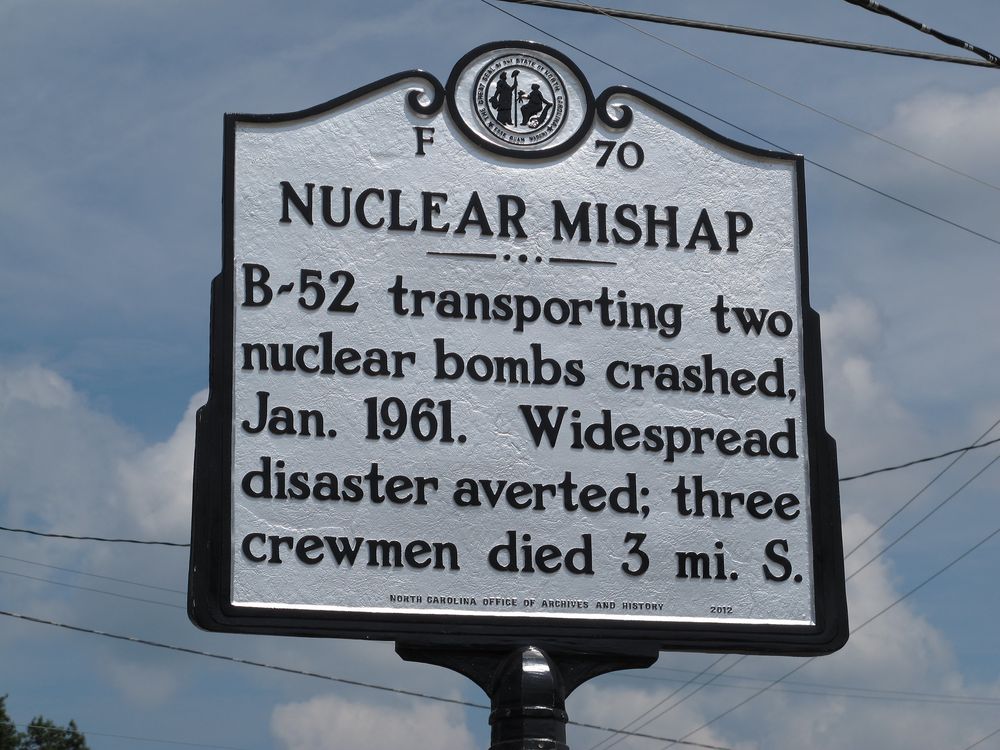
A historical road marker in the town of Eureka, 3 miles north of the crash site, commemorates the crash. Photo: Kelly Michals/Flickr
On board the B-52 bomber were two 3.8 megaton Mark 39 thermonuclear weapons. As the pilot-less airplane fell, it broke-up midair and the two hydrogen bombs separated from their bays. The following day, responders arrived on the crash scene 12 miles north of Goldsboro, and found that one of the nuclear weapons had landed with its parachute deployed, which became tangled in the branches of a tree. The other weapon, with no parachute to slow it down, struck ground at the speed of sound, and became entombed 18 feet below the surface.
Air force officials announced that the nuclear core of the weapons were intact and there was no danger of radiation affecting the area. But later sources revealed that explosion was a real concern. A former military analyst claimed to have seen highly classified documents indicating that the bomb had accidentally armed itself while falling, and only one out of its seven arming switches was in the “off” position preventing detonation.
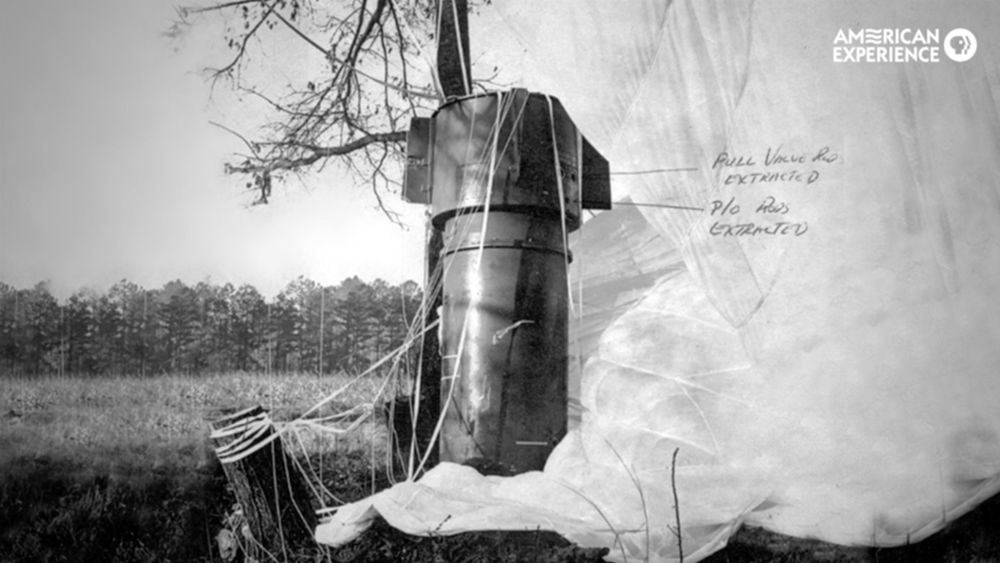
This information was confirmed in 2013, when author Eric Schlosser acquired a declassified document under the Freedom of Information Act. In the document created eight years after the incident, Parker F Jones, the supervisor of the nuclear weapons safety department at Sandia National Laboratories, wrote that five of the six safety mechanisms in the bomb had become unlocked during its plunge to the ground.
“One simple, dynamo-technology, low voltage switch stood between the United States and a major catastrophe,” Jones wrote.
“The MK 39 Mod 2 bomb did not possess adequate safety for the airborne alert role in the B-52,” he concluded.
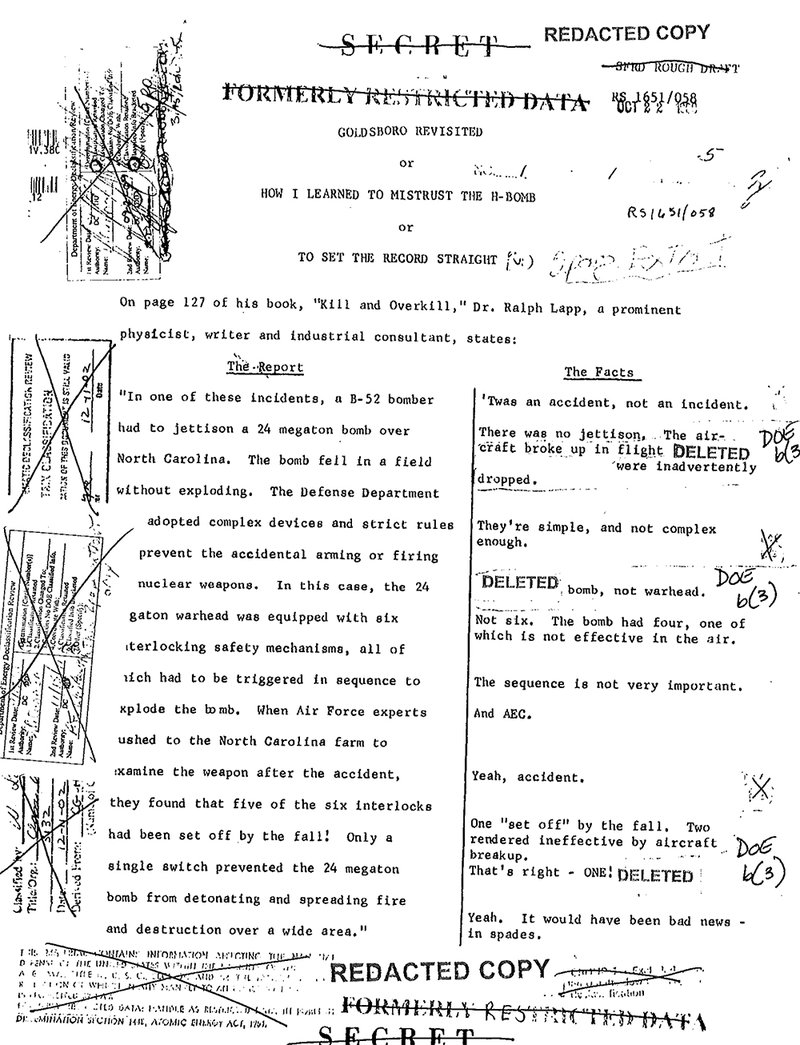
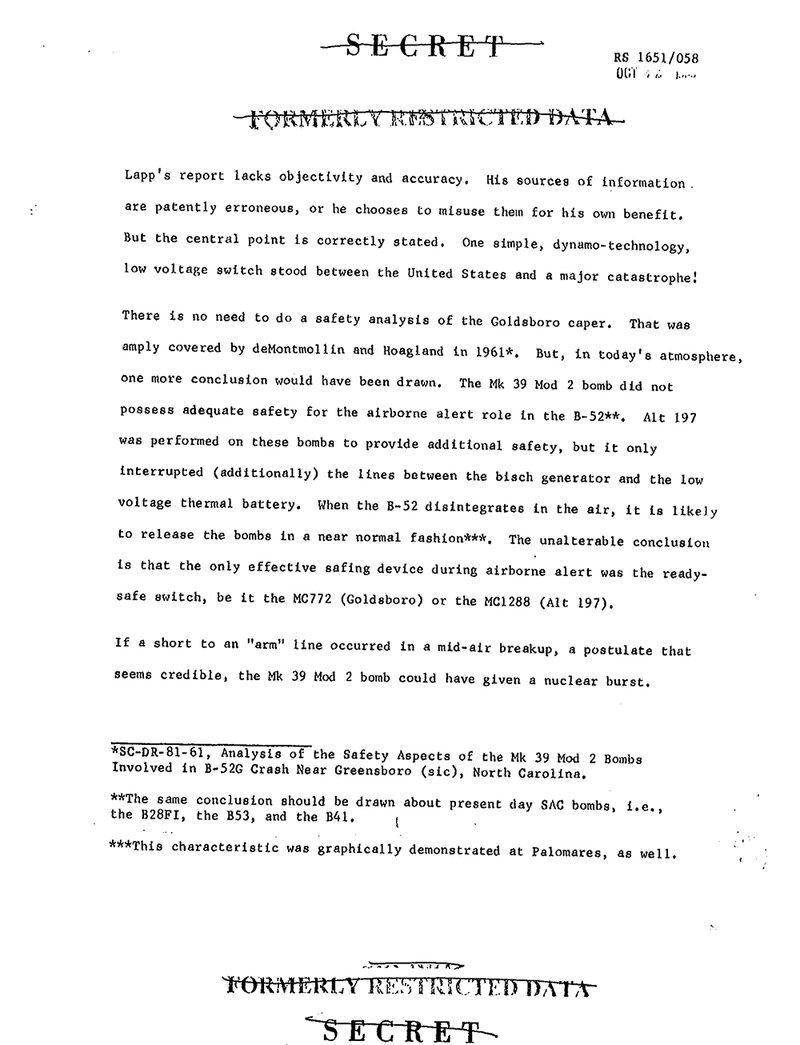
These thermonuclear devices were 250 times more powerful than the one that destroyed Hiroshima. If detonated, it would have produced a fireball 2 km in diameter, and inflicted third-degree burns as far as 19 km away. Thousands of people would have died instantly. Millions more would have been affected by nuclear fallout.
But some authors dispute this claim. Michael H. Maggelet and James C. Oskins, in their book Broken Arrow: The Declassified History of U.S. Nuclear Weapons Accidents, points out, citing another declassified document, that the arm-ready switch was in the safe position, and the high-voltage battery was not activated so no electrical power could reach any components necessary to fire the weapon and produce a nuclear explosion. Additionally, the Rotary the Safing Switch was destroyed preventing energization of the X-Unit, which controlled the firing capacitors. Under these circumstances, the possibility of a detonation was next to none.
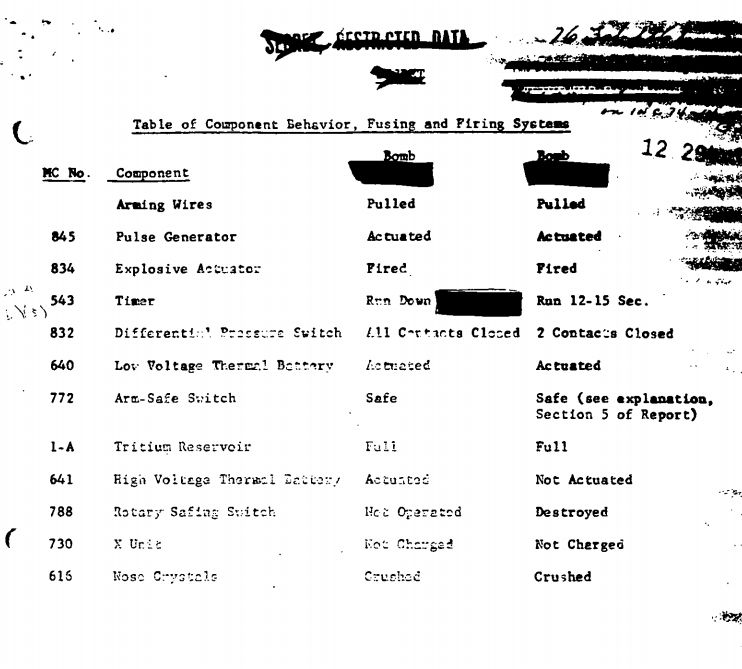
The second weapon, which crashed without the parachute, broke up into several pieces, one of which was never found. The lost piece contained a significant amount of high-enriched uranium.
Eric Schlosser, who unearthed the documents while researching for his book Command and Control, discovered that at least 700 significant accidents and incidents involving 1,250 nuclear weapons were reported between 1950 and 1968 alone. In at least thirty of these occasions, as Charlie Bunks, a retired nuclear weapons system engineer at Sandia National Laboratory revealed, the ready-safe switch—which had prevented the Goldsboro weapon from detonating—had armed itself inadvertently.
“The US government has consistently tried to withhold information from the American people in order to prevent questions being asked about our nuclear weapons policy,” Schlosser told The Guardian. “We were told there was no possibility of these weapons accidentally detonating, yet here's one that very nearly did.”
Stephen Schwartz, a nuclear weapons analyst told KPBS: “Of course, no nuclear weapons accident actually resulted in the actual detonation of a nuclear warhead or bomb, and for that we can be grateful to our engineers who designed these weapons and built in a number of safety systems. But we also have to give a lot of credit to just plain old dumb luck.”


